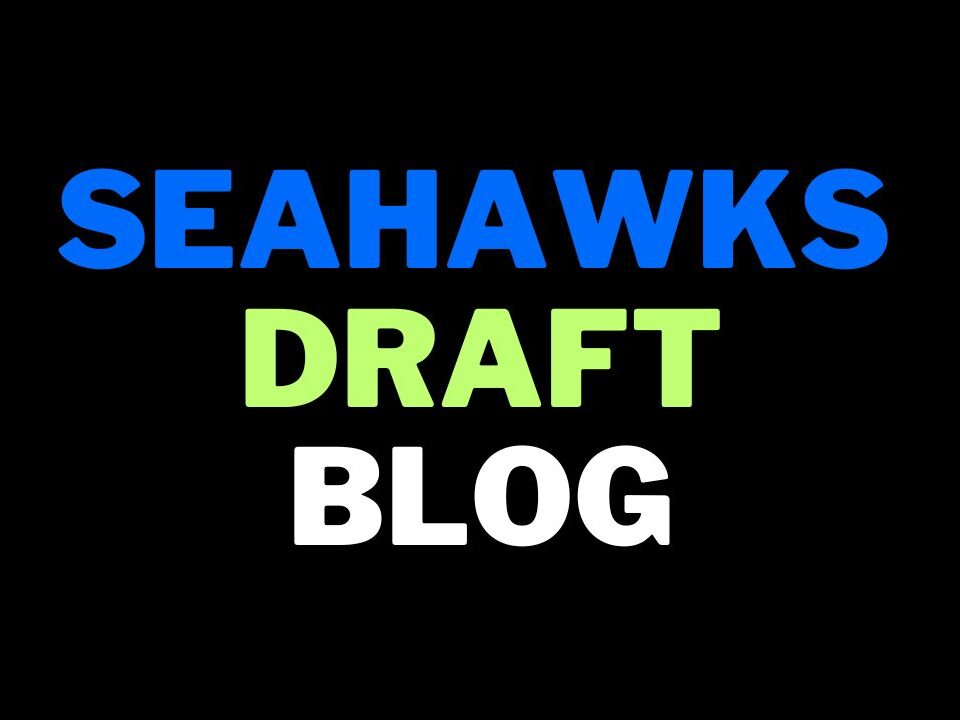
UNC receiver Dwight Jones is a first round talent and may be the #1 receiver for 2012
We’re at week five of the college football season and I wanted to note the players I’ve seen that I feel are deserving of first round grades. It’s not a big list and it’s why I won’t compile a mock draft until closer to the new year. So far there are twelve players on the list. The first four guys (Luck, Barkley, Kalil and Richardson) are the only players I believe are worthy of top-five grades at this point.
*Note* – please remember that it’s still early. I’ll never make definite judgements based on 1-2 games and in some cases I just haven’t had the opportunity to watch certain teams/prospects. I’ll come back to this list in a month to see how things have changed.
The twelve prospects with first round grades as of October 2nd
Andrew Luck (QB, Stanford)
Decorated first round prospect who will be the #1 overall pick next April.
Matt Barkley (QB, USC)
The only other 2012 eligible quarterback who warrants a first round grade.
Matt Kalil (OT, USC)
Hugely talented in pass protection and that will secure a top grade, but needs to improve his run blocking.
Trent Richardson (RB, Alabama)
Now a potential top-five pick considering the new rookie pay scale. Richardson is just brilliant.
Dwight Jones (WR, North Carolina)
The complete package at wide receiver, Jones is now showing consistency and production.
Zach Brown (LB, North Carolina)
Always involved and jumps off the screen, the defensive MVP at UNC.
Peter Konz (C, Wisconsin)
Excellent interior line prospect who should be able to start quickly. Will he declare? Debatable.
Vontaze Burfict (LB, Arizona State)
Will bring attitude, talent and playmaking qualities to the NFL.
Jonathan Martin (OT, Stanford)
An athletic lineman that teams will covet due to the importance of blind-side blocking.
Mohamed Sanu (WR, Rutgers)
Sanu’s catching, running and blocking are all excellent – a unique physical talent.
Alshon Jeffery (WR, South Carolina)
Big possession receiver who will make a very good #2 at the next level.
Justin Blackmon (WR, Oklahoma State)
At his best comparable to Greg Jennings & Roddy White, but there are too many little mistakes.
There are also several prospects I’ve watched either in 2010 or 2011 that have created some impression. I want to note those players here as having the potential to be among the first round group by next month. Again, these are just a selection of names and are not all-inclusive or definitive. Indeed these players may never reach first round consideration, but they’re some of the players I wanted to highlight.
Players who have created an impression without solidifying first round grades
TJ McDonald (S, USC)
Good against the run but also above average in coverage – the best safety prospect for 2012.
Nick Perry (DE, USC)
Perry is now playing at 100% and he’s getting to the quarterback. Technique matches speed.
Kheeston Randall (DT, Texas)
He moves well and he’s tough to shift. Randall gets into the backfield but needs to learn to finish.
Melvin Ingram (DE, South Carolina)
Initially a rotational cog, but has worked into a greater role. I started the year thinking he’d be a mid/late rounder, but he just keeps making huge plays.
Greg Reid (CB, Florida State)
Reid is physical despite a lack of ideal size and he has a future at the next level.
Brandon Thompson (DT, Clemson)
Production not good enough so far considering the supporting cast and a year with Da’Quan Bowers, but there is something there.
Janoris Jenkins (CB, North Alabama)
Top-10 elite potential held back by off-field issues. AJ Green, Julio Jones and Alshon Jeffery had their worst games against Jenkins in 2010.
Marquis Spruill (OLB, Syracuse)
Electric linebacker prospect who will play three downs in the NFL.
Jayron Hosley (CB, Virginia Tech)
Hosley gets burned from time to time for being too aggressive, but he’s also a huge playmaker with 12 picks in the last year.
Jared Crick (DE, Nebraska)
At times Crick looks like a top-15 pick, but he also looks irrelevant at times too.
Kendall Wright (WR, Baylor)
Wright has enjoyed an explosive start to the season and despite lacking great size he’s becoming hard to ignore.
Logan Harrell (DT, Fresno State)
Under rated three-technique prospect who gets to the quarterback. I really like this guy.
Quinton Coples (DE, North Carolina)
Pure physical potential but doesn’t make the most of it.
Austin Davis (QB, Southern Miss)
Davis is an under rated quarterback prospect who deserves greater attention.
Stephen Lee (WR, Georgia Tech)
Lee is a big and fast receiver who flashes moments of quality.
Jeff Fuller (WR, Texas A&M)
The only player who gave Patrick Peterson a hard time last year, but Fuller hasn’t exploded in 2011.
Vinny Curry (DE, Marshall)
Curry is a consistent pass rusher who could lead the nation in sacks this year. LEO potential.
Alameda Ta’amu (DT, Washington)
Nose tackle prospect who is not in Phil Taylor’s class but he still has high first round potential.
Riley Reiff (OT, Iowa)
Reiff looked good blocking against Brandon Lindsey and Pittsburgh.
Morris Claiborne (CB, LSU)
So far it’s hard to ignore the terrific performances of this talented LSU corner in 2011.
Finally I wanted to note the five players who are generally given very high grades but I feel are over rated. That’s not to say that players like Quinton Coples and Landry Jones won’t be first round picks – maybe even early picks – but personally I wouldn’t advocate taking them as high as some have projected.
The top-five over rated prospects
Landry Jones (QB, Oklahoma)
A product of the Oklahoma offensive scheme, Jones hasn’t flashed top-end pro-potential in my view.
Dre Kirkpatrick (CB, Alabama)
Tall but should be much more physical than he is. A bit static, lacks fluidity and generally I haven’t been that impressed with Kirkpatrick.
Donte Paige-Moss (DE, North Carolina)
How is this guy graded in the first round by people who should know better? For the record, it’s one sack this year. One.
Jerel Worthy (DT, Michigan State)
Not great as a pass rusher or run stuffer and Worthy is often taken out for third downs.
Quinton Coples (North Carolina)
Coples is all about physical potential, but too often he’s annonymous.
Special mention: Ryan Tannehill (QB, Texas A&M) and Robert Griffin III (QB, Baylor)– two project quarterbacks at the next level that people appear desperate to promote above their means seemingly to justify premature and inaccurate claims that 2012 presents a rare class of QB’s. Tannehill is much more polished than Griffin III, but he’s still relatively inexperienced and learning the position. He stares down receivers and he’s not used to going through progressions. There’s a high degree of athletic potential and his technique is better than you’d expect, but he’s strictly a project in my mind. Griffin’s numbers are sensational this season, but he’s not a polished passer and his footwork needs a complete re-work. Team’s will show interest earlier than they should based on athleticism and leadership, but he’s a long term developmental project and I struggle to imagine Griffin III playing in the NFL.






